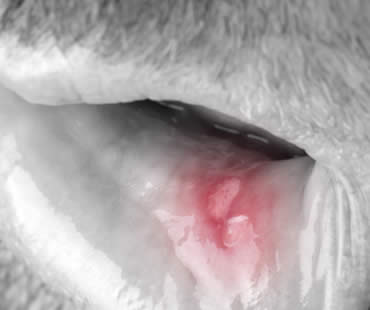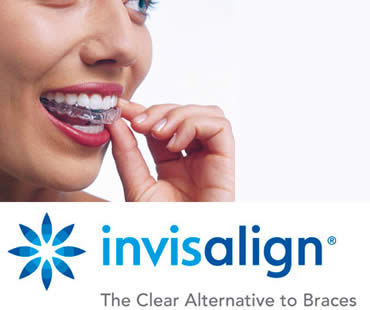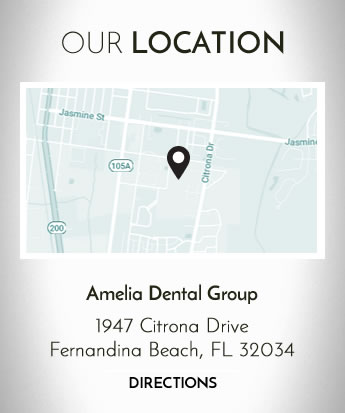
The word cancer strikes fear and dismay in most people, and it’s no different when the diagnosis is oral cancer. Nearly 37,000 Americans are diagnosed with this disease each year and about 8,000 succumb to it. You should know the risk factors and symptoms so that you can either avoid it completely, or catch it early enough that you’ll have the best chance of recovery.
Who is at risk?
Oral cancer is not contagious, but there are some activities that put you at higher risk for the disease. Both smoked and smokeless tobacco are linked to oral cancer, and the more you use tobacco the greater your risk becomes. Excessive alcohol consumption also increases your risk, and paired with tobacco use your risk is even higher. Sun exposure heightens your chances of developing cancer of the lip.
What are the symptoms?
Oral cancer patients may experience any of these signs of the disease:
- A sore in the mouth or throat that bleeds often and doesn’t heal within two weeks
- A thick area or lump in the cheek
- Patches in your mouth or on your lips that are red, white, or a mixture of the two
- Pain or difficulty swallowing
- Difficulty wearing your dentures
- A sore throat
- Tongue or mouth numbness
- Difficulty chewing, or moving your jaw or tongue
- Earache
What should I do if I have symptoms?
If you notice any of these signs, visit your dentist right away to get screened for oral cancer. When diagnosed early, there is an 80 percent survival rate. Unfortunately many patients wait too long to see their dentist, and late-stage diagnosis is the reason for most oral cancer deaths.
We look forward to seeing you in our Fernandina Beach dental office

If you are dealing with ongoing tooth pain, you may be too fearful to go to the dentist to find out what’s going on. It’s important that you do, however, as you may need root canal therapy. Your dentist will need to evaluate you to see if that procedure is necessary, and will closely examine several factors: the signs the dentist can see personally, the results of any tests performed during your visit, and the symptoms you have been experiencing with the problematic tooth.
Your dentist may observe:
- A tooth that is discolored
- X-rays that reveal a tooth problem
- A fistulous tract, or persistent or recurring gum pimple
Additional testing done by your dentist:
- X-rays provide an extremely clear picture of the health of the tooth
- Thermal testing can evaluate sensitivity through a careful application of hot or cold temperatures
- Percussion testing evaluates pain response through gentle tapping
You may have been noticing:
- A broken or cracked tooth obviously decayed or damaged
- A discolored tooth, especially a grey tooth
- A “bubble” in your gums, like a pimple. It may or may not have ruptured, leaking pus that smells or tastes awful
- Pain that shoots out from one tooth to your jaw or ear, leading to earache symptoms
- Pain that prevents you from living your life without painkillers
- Pain, sensitivity or swelling on one certain tooth
- Extreme sensitivity to hot or cold liquids that lingers and is very painful
In some cases, an infected tooth that requires a root canal treatment has no symptoms at all that could be discerned by you. Only a dental professional can confirm the need to undergo root canal therapies. If you are experiencing pain that disrupts your life, talk to your dentist or endodontist immediately. Root canal treatments are designed to relieve the pain you’re experiencing now and to restore your tooth to full form and function. Don’t wait to get your life and smile back!
Our dental office is located in Fernandina Beach

Sedation dentistry provides a way for those who experience anxiety or fear about visiting the dentist to get the treatment they need. It is also helping in relieving pain, and enabling more dental work to be performed in one visit. Two common methods of administering sedation are oral and intravenous (IV). Each type has its own unique characteristics and attributes.
Oral sedation involves swallowing pills or liquids. There are no shots, which is good news for patients afraid of needles. However, oral sedatives are less predictable because each medication affects people differently based on age, weight, medical history, and more. Also, there is a time delay between swallowing it and taking effect. Since the medication is absorbed through digestion, it is difficult to alter the sedation level quickly during treatment. Nearly all patients respond well to oral sedation, with few occurrences of any side effects. Patients typically don’t remember anything that occurred during treatment.
IV sedation means that the medication goes directly into the blood stream though an IV injection. A very powerful method, the effects are instant once the shot is given. If the medication begins to wear off, more can be administered through the IV for immediate results. IV sedation is very common during oral surgeries, which benefit from the ability to alter the medication dosage as needed. It is advantageous for long procedures or when multiple treatments are being done in one sitting. Patients will not remember the procedure or sometimes even the appointment at all. The biggest drawback of IV sedation is for patients who dislike needles. IV sedation requires that the dentist have special training and certification, so make sure that your dentist is qualified if this method is offered.
Both types of sedation can be effective depending on the situation and patient. Discuss your case with your dentist to help you decide which one might be the best for you.
Schedule your appointment at our Fernandina Beach dental office

You might wonder what the difference is between general dentistry and family dentistry. They are quite similar but have a few key distinctions. Finding the right dental health professional for you and your family is very important, and maintaining checkups and treatment is part of the process.
One major element of family dentistry is that these professionals accepts patients of all ages, from babies to senior adults. Every member of your family can visit the same office and receive consistent quality care that you expect from your chosen dentist. Each age group has unique needs that can be addressed by a family dentist who is trained and experienced in handling those concerns.
Family dentists provide treatment to both repair existing problems. Diagnosing oral health issues and then performing procedures such as fillings are common parts of the job. Your family dentist may recommend that some services be treated by a specialist, like oral surgeons for dental implants, endodontists for root canal therapy, or orthodontists for braces. However some family dentists perform those types of procedures, so it depends your service provider.
Family dentists also perform treatments to help avoid future oral health problems. Things like cleanings, fluoride treatments, and sealant application are all routine tasks. It is vital to schedule dental checkups every six months to catch and treat problems before they have a chance to advance. Some offices provide teeth whitening, and all family dentists are well-versed in training your family members in the best techniques for home dental hygiene.
To increase the likelihood of you and your loved ones keeping appointments, choose a family dentist with a convenient office location. Also, find a practice that is comfortable and appealing to family members. Younger children may benefit from distraction items such as television or video games. If dental anxiety is an issue for anyone, a practice that offers sedation dentistry may be a good choice.
Ask coworkers, friends, and neighbors for recommendations for a good family dentist in your area. Visit the practice to ensure it is right for you, and then make and keep appointments for everyone in your family.
Schedule your appointment at our Fernandina Beach dental office

With an estimated 49 million adults in the United States wearing dentures, there are lots of lessons learned about wearing them. Virtually everyone will say that it took a little adjustment time before they were comfortable and confident with their new teeth. It can help to know what to expect with wearing dentures at first.
Your dentures may feel very strange the first day you get them. They can seem too big for your mouth, and as though your lips are out of place. These strange sensations will disappear with time. You may also notice more saliva than usual in your mouth. This is a natural response of your mouth as it grows accustomed to the appliance.
A liquid diet is recommended by many dentists for the first couple of days after getting dentures. Then you may begin eating soft foods, like cooked vegetables, eggs, and fish. Take small bites and chew slowly. Avoid biting into foods with your front teeth.
Mouth soreness from your dentures should go away after a few days. If it lasts longer than a week, call your dentist to ask if you should be seen. You may experience minor mouth sores for the first couple of weeks that you wear dentures. This is normal as you give your mouth time to adjust. If the sores are severe, call your dentist.
Dentists recommend that you remove your dentures for a minimum of eight hours each day to give your gums a rest. Most patients do this at night while sleeping. Your dentist will provide instructions about how to care for your dentures and where to store them when not wearing them. Be sure to follow the instructions for care to ensure that your dentures last as long as possible.
Our dental office is located in Fernandina Beach

A new way to straighten teeth has been introduced with Invisalign clear braces. As you wear the invisible plastic aligners, your teeth are gently shifted into better positions and you avoid many of the hassles associated with traditional braces.
Treatment begins with a consultation with a professional who has been trained and recognized to provide Invisalign braces. A thorough analysis of your teeth and jaw, as well as your smile goals, will be done to determine if Invisalign is right for you. If so, a treatment plan will be customized just for you after X-rays and impressions of your mouth are taken. The process also uses 3D images to create a computer simulation of your treatment.
Using the exact measurements taken of your mouth, a set of aligners will be made from clear plastic. Invisalign treatment advances in stages, with a different set of aligners worn every two weeks. They should be worn consistently for about twenty hours daily, but are removable for eating and cleaning. Maintenance is simple because the aligners can be gently brushed along with your normal brushing routine.
There are no restrictions about foods to avoid when undergoing Invisalign treatment, since the aligners are removed while eating. You also don’t have to worry about food getting stuck in the braces like with metal braces, and because food doesn’t contact the aligners there are no worries about stains. Invisalign braces can be worn while playing instruments or sports, although they should not be considered a substitute for a protective mouth guard.
Visits to the orthodontist are usually required every six months or so to monitor treatment and ensure ideal results. The amount of time it takes to achieve your smile goals depends on each patient and how consistently the aligners are worn, but treatment often lasts about a year.
We treat patients from Fernandina Beach and the surrounding area







